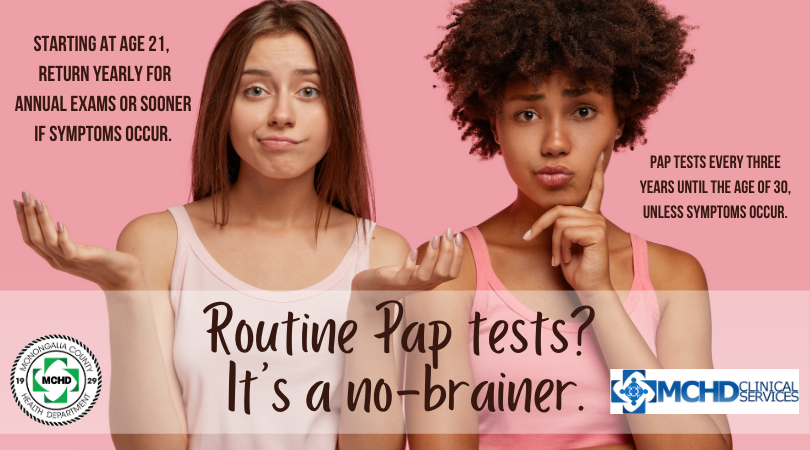HPV vaccine and Pap tests are key in preventing cervical cancer

Jan. 27, 2021
By Matt Cimino
January is Cervical Cancer Awareness Month. There are more than 13,000 women who are diagnosed with cervical cancer each year. This may not seem like a large number, but awareness of this health issue is especially important considering that the disease is preventable through vaccination.
Human papillomavirus, or HPV for short, is a common virus that has been linked to six types of cancer. Cervical cancer the most prominent, but it also can cause cancer of the penis in men and throat and anal cancer in members of both genders, in addition to cancer of the vulva and vagina in women.
HPV is actually so common that the Centers for Disease Control and Prevention estimates that there are around 80 million Americans who currently have it, and that most sexually active people will eventually get it without an HPV vaccine.
HPV is spread through intimate and sexual skin-to-skin contact and can cause a condition known as genital warts. It can be transmitted by having vaginal, anal or oral sex with someone who has the virus. Most infections go away after about two years, but long-lasting cases can lead to cancer. In both men and women, HPV is estimated to be the cause of about 36,000 cancer cases each year.
The most important preventative measure in the battle against cervical cancer is to get the HPV vaccine. The vaccine is completely safe and works to protect people before they are exposed to the virus.
So who gets the vaccine? The CDC recommends that both girls and boys get both doses of the vaccine at ages 11-12. After the first dose is administered, the second dose should be taken six-12 months after. If you have missed this window for your children, you can still receive the vaccine up to age 26 under a physician’s guidance.
After more than 12 years of monitoring and use, research has shown that the HPV vaccine is safe and effective. Here are some great prevention statistics: Among teenage girls, HPV types that cause genital warts and most cancers have dropped 86 percent. Among adult women, that number is 71 percent. Cervical precancers caused by HPV in adult women has also dropped 40 percent.
Even though the vaccine is widely available, testing is still important for early HPV and cancer detection. It is recommended that all women should begin getting Pap tests beginning at the age of 21. It should be repeated every three years unless a woman experiences symptoms, which can include bleeding between periods, vaginal discharge, pain during intercourse and bleeding after menopause.
At the age of 30, the Pap tests should be repeated every five years, unless, once again, a woman experiences symptoms. This is also the age when women should begin getting HPV tests during their annual checkups.
Pap tests are an incredibly important tool for early detection and prevention. Also known as a Pap smear, this process looks for abnormal cell growth on the cervix that could lead to cancer. HPV tests function differently as they look for the virus itself.
Which tests you get and how often they are done depends on if you were vaccinated, exposed to the virus, or possibly at an increased risk for cervical cancer. Speak with your primary care provider or gynecologist about what is best for you. You can also call MCHD Clinical Services at 304-598-5119 for an appointment for an HPV vaccine and/or a Pap test.
Ultimately, cervical and other cancers caused by HPV are vaccine preventable. That is why Cervical Cancer Awareness Month is such an important health topic. The more people know about safe vaccines, proper cancer screenings, and HPV tests, the better we can fight to reduce cervical cancer.
Matt Cimino is a public information office intern at Monongalia County Health Department.